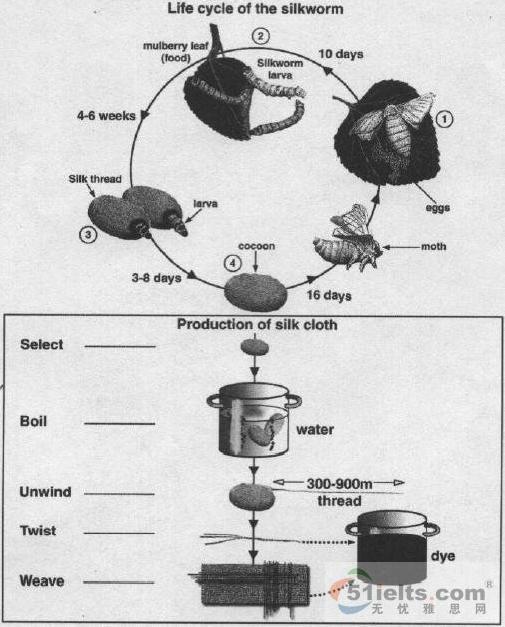The diagram provided shows the lifecycle of silkworm and the figure adjoining it illustrates the production of silk cloth.
It is on mulberry leaves, which are primarily also food for larva, where moth lays its eggs. These eggs take 10 days to turn into larva. After about 4-6 weeks the larva produces silk thread around itself which apparently becomes cocoons within 3-8 days. Out of this cocoon, moth evolves by the end of 16 days, which is again capable of laying eggs and carry on with the cycle.
The raw material for the production of silk cloth, the cocoons, are selected, boiled in water and then unwound. That provide with threads of about 300-900 mm length, which are twisted to produce yarn, dyed and weaved.
It is on mulberry leaves, which are primarily also food for larva, where moth lays its eggs. These eggs take 10 days to turn into larva. After about 4-6 weeks the larva produces silk thread around itself which apparently becomes cocoons within 3-8 days. Out of this cocoon, moth evolves by the end of 16 days, which is again capable of laying eggs and carry on with the cycle.
The raw material for the production of silk cloth, the cocoons, are selected, boiled in water and then unwound. That provide with threads of about 300-900 mm length, which are twisted to produce yarn, dyed and weaved.

20070918114549.jpg
